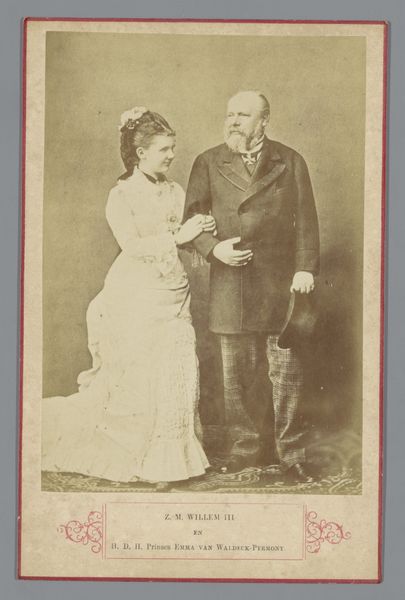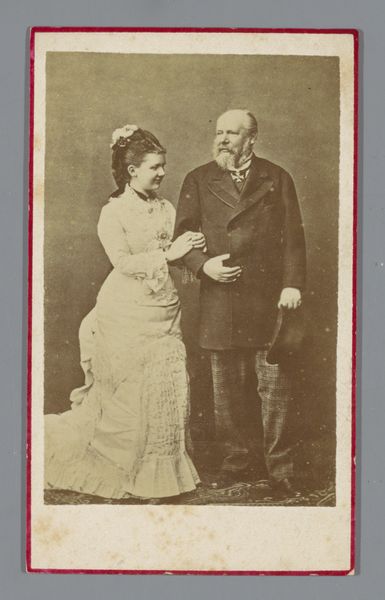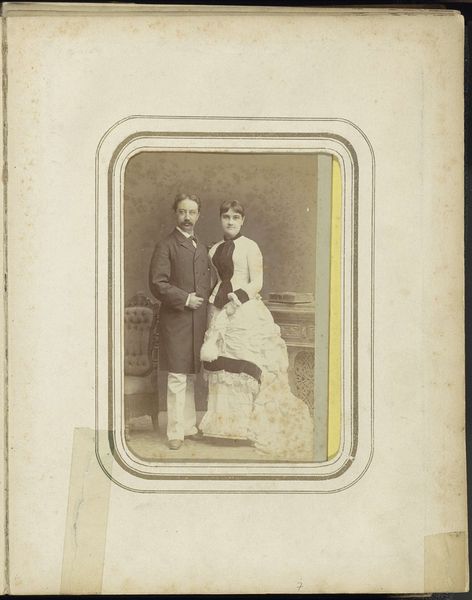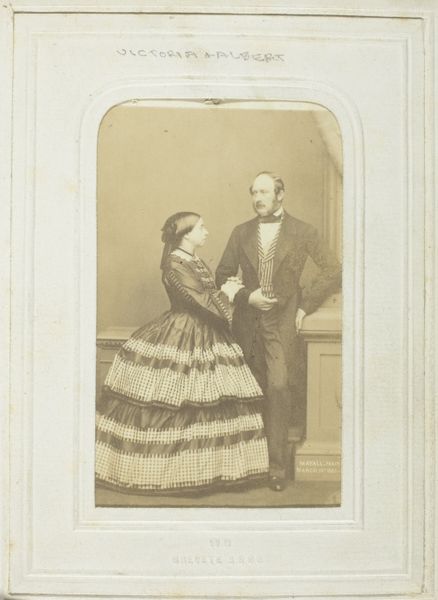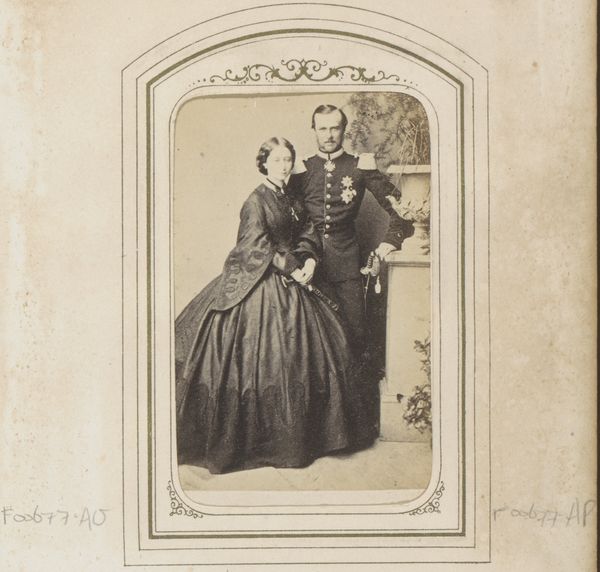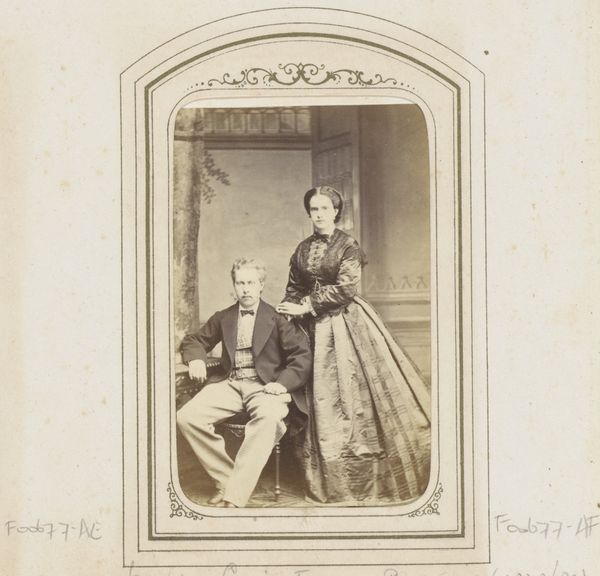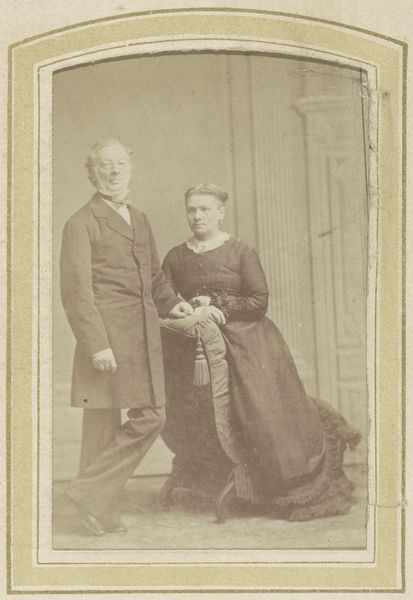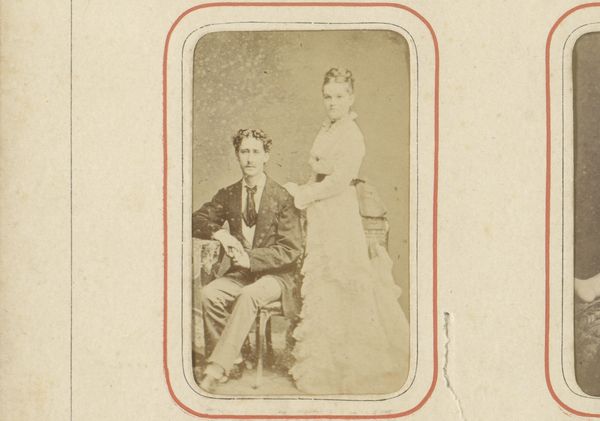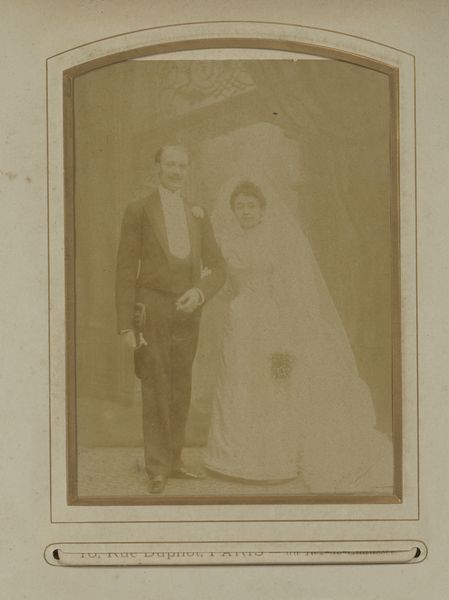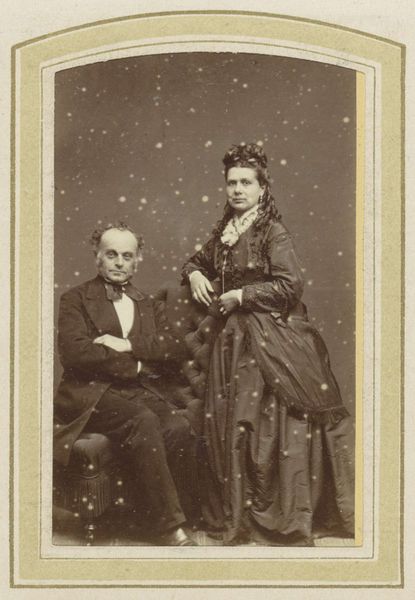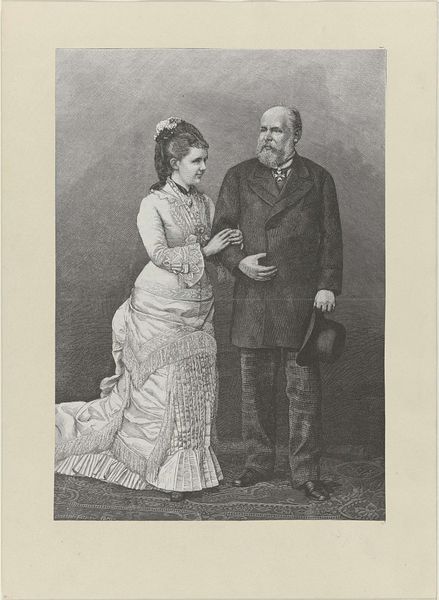
photography, gelatin-silver-print
#
portrait
#
aged paper
#
toned paper
#
vintage
#
photo restoration
#
parchment
#
archive photography
#
photography
#
historical photography
#
old-timey
#
yellow element
#
gelatin-silver-print
#
19th century
#
realism
Dimensions: height 85 mm, width 53 mm
Copyright: Rijks Museum: Open Domain
Curator: Here we have a portrait from the late 19th century, likely between 1880 and 1890. It's an albumen print depicting King Willem III and Queen Emma. The photograph is held at the Rijksmuseum. Editor: It has a ghostly aura about it, like peering into the past. The aging of the paper, the sepia tones...there's an inherent melancholy. Curator: Portraits of monarchs during this period served a clear function: projecting power and stability, influencing public perceptions. We see it reproduced extensively. Consider its dissemination via new technologies and how crucial that was to establishing an image of royalty. Editor: But even the process reveals something about control, or the illusion of it. The laborious process of preparing the gelatin-silver-print. All those steps – the coating, sensitizing, exposing, developing – a far cry from our instant snapshots. Think about the skill invested, the chemical industry needed to support it… Curator: Precisely. The creation and distribution of such images was becoming highly industrialized. Royalty portraits affirmed existing power structures but they also provided economic benefits to various producers from photographers, lab assistants to chemical suppliers. Editor: I can almost feel the paper's texture; the chemicals layered, soaked and set over the paper, that specific alchemical manipulation to achieve a likeness. A constructed reality – the stiff pose, Emma clinging to his arm for balance as if holding on to something fading or falling away. Curator: She looks almost like she’s pleading! There’s such calculation evident. Arranged marriages were tools of statecraft. This wasn’t about love. What appears as romantic support could very well be a carefully posed statement for public consumption. Editor: The clothes of King Willem the Third must also be considered; in many respects, garments carry weight. And what is to be seen as the role for the common man who has no means? Curator: Absolutely. Even seemingly candid portraits become loaded when scrutinized through the lens of political and social influence. The king wearing the same, simple business attire as others in court… it implies certain messages, particularly in a class conscious time. Editor: Examining its materiality exposes an inherent contradiction: attempting permanence through fragile means, constructing an image of enduring royalty on a substrate destined to degrade, turn yellow, and crack. But I think this conversation, though… has perhaps cracked open some truths! Curator: I couldn't agree more. Looking at this image, with all its complexities, reminds us of the role that art plays in history.
Comments
No comments
Be the first to comment and join the conversation on the ultimate creative platform.
